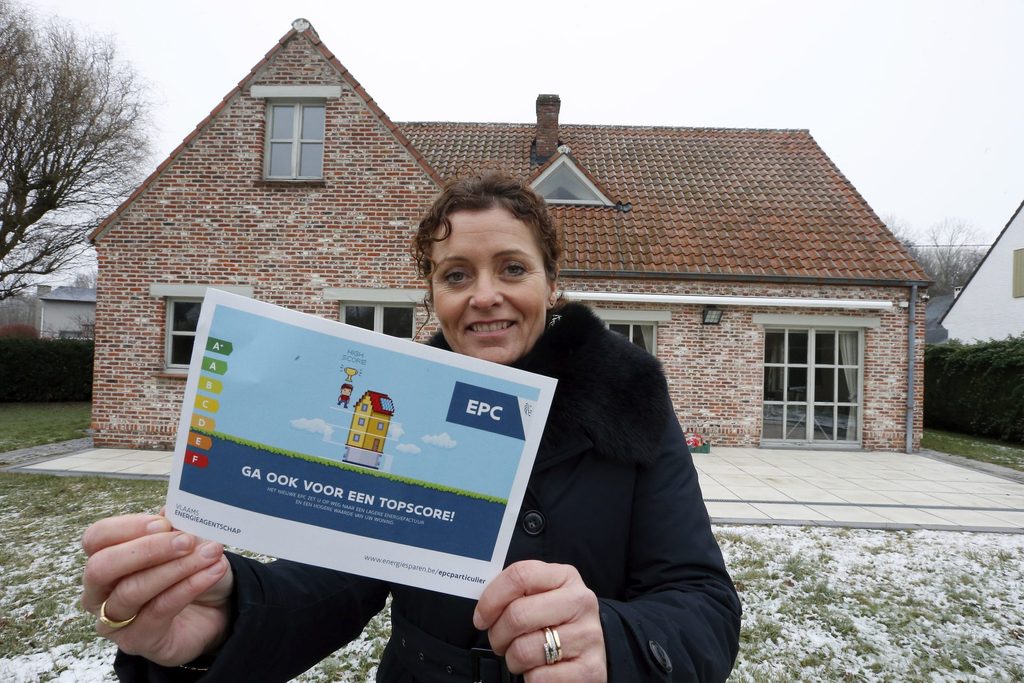The energy performance of buildings has become a significant concern for property owners and occupants across the country as the energy crisis highlighted the cost of poorly insulated buildings.
The focus on energy performance has led to legislation which aims to improve Belgium's building stock, both to save on energy bills and to reduce emissions. But although the benefits of an efficient building are undisputed, the Energy Performance Certificate (EPC) system that ranks energy performance is far from flawless.
Indeed, some argue that it risks diverting attention from other crucial steps to improve efficiency. Not only is the issue of certificates complicated by the fact that they are not standardised across the country (there are marginal differences between the regions), some have criticised the significant differences between the companies that carry out the certification.
At a more fundamental level, the certificates can lead us to forget the vital human part of the calculation. This results in the estimated energy consumption differing enormously from the actual energy usage. This inaccuracy can substantially skew estimations of energy use and pollution, potentially leading to local emissions forecasts being way off.
The price of poor buildings
The energy crisis brought on by Russia's invasion of Ukraine had a profound impact on households, whose bills in many cases rose by hundreds or even thousands of euros. The situation put the need for energy efficiency in the spotlight and consumption plummeted as a result.
But whilst we have grown more aware of the economies of using appliances frugally, the overall efficiency of Belgium's buildings has also come under the spotlight. In Brussels, four in ten properties on sale have a poor energy performance ranking. And with 60% of the region's residents being renters, new legislation is being brought in to push landlords to carry out energy efficiency renovations – after first obtaining an EPB energy certificate.
The savings to be made through home energy improvements have been raised on the public and political agenda and are now a key factor in property sales. "Since the energy crisis, buyers have been paying more attention to the energy performance of their homes," confirms Jonathan Frisch, an economist at Immoweb estate agent.
Some period buildings protected by the region have especially poor energy ratings. One occupant who was prevented from installing upgrades to his building voiced his frustrations to RTBF: "I'm heating the clouds. And now I'm hit with energy bills of €1,000. I'm left with no choice but to pollute and pay the price."
Forgetting the occupants
Numerous studies in Belgium and elsewhere make clear the shortcomings of EPCs for use in calculating actual consumption. An investigation in the UK last year showed that the British certificates are "staggeringly inaccurate".
Indeed, the difference between the expected consumption and the actual energy use grows as ratings get worse. One study in France found that a G-rated home would in theory use 560% more energy than a comparable home with an A or B certificate. In reality, it used just 86% more. Also problematic is the divergence between energy ratings in different countries, making it difficult to harmonise performance ratings.
This tendency to overestimate the use of properties with low ratings has been noted in analyses across Europe. But although some have been led to criticise the certification system, others point out the central part that human behaviour plays in energy use.

Flemish Minister of Finance, Budget and Energy Lydia Peeters poses with an Energy Performance Certificates (EPC). Credit: Belga / Nicolas Maeterlinck
The rebound effect
An especially interesting aspect of the consumption conundrum is how a building's occupants modify behaviour. This goes some way to account for inconsistencies with the energy certificates.
Marc Delghust, a post-doctoral specialist in building energy and renovation at Ghent University and Scone (a carbon emissions consultancy), explains the socio-economic phenomena of the "rebound" effect, which describes how people adjust according to their environment.
With the rebound effect, a person in a building with a good energy performance rating might pay less attention to what they use: "If you know that something has become more efficient, you pay less attention to it as a result and will lose some of the efficiency gains."
"The Belgian method does not take the rebound effect into account and there are also other limitations to the method," Delghust told The Brussels Times. This means that buildings with good energy ratings may not consume so much less than a building with a worse rating – because the occupants behave very differently.

It's not just about what you do to the building, human behaviour remains key. Credit: Canva
The limits of the EPC
It isn't only these quirks of human psychology that influence consumption. Delghust highlights other aspects of the overall calculation that are often overlooked.
The EPC looks at a property from the exterior and estimates how much energy would be lost. But this tells us relatively little about how the building is used inside. "Take the example of people who insulate their roof: this will improve the EPC rating but in reality may not be the best investment if you spend most of the time in the ground floor kitchen and living room and don't heat the bedrooms and attic. Comfort doesn't mean anything if nobody's in the room to appreciate it."
This is a significant downside of putting the certificates under the spotlight: it takes the attention away from the ultimate aim – to support a comfortable and healthy environment indoors whilst keeping energy use to a minimum.
"The more stringent regulations become, the more you design towards them," Delghust explains. "The risk is that buildings are designed around the EPC labels without accounting for common sense human behaviour. You need to think about both."
Other issues include central heating systems, most of which don't allow you to heat individual parts of the house. And open planning also means that we end up having to heat much larger spaces than needed. Neither of these have anything to do with EPCs however and Delghust stresses the importance of a "common sense" approach rather than allowing a technical specification to decide how we build and renovate.
Article updated on 13 March 2024. A previous version made reference to the "pre-bound" effect, which is a contrary but weaker concept than the rebound effect.

